Dracula (1958)
Directed by: Terence Fisher
Written by: Bram Stoker, Jimmy Sangster
Starring: Christopher Lee, Melissa Stribling, Michael Gough, Peter Cushing
AKA HORROR OF DRACULA
UK
AVAILABLE ON BLU-RAY AND DVD [BLU-RAY REGION B ONLY]
RUNNING TIME: 82 min
REVIEWED BY: Dr Lenera, Official HCF Critic
May 3, 1885: Jonathan Harker goes to Castle Dracula in Klausenberg, supposedly as a new librarian, but in reality on a mission to destroy Count Dracula, a deadly vampire whose reign of terror holds sway over the local population. Inside, he meets a strange woman who asks him to help her escape, then Dracula, who seems cordial enough, locks him in his room. He is freed by the woman, but she turns out to be a vampire who bites him before Dracula intervenes. The next morning, Harker, knowing he must act fast, hides his diary at a crossroads and goes to the crypt where he stakes the woman vampire, but Dracula wakes up. Days later Harker’s colleague Abraham Van Helsing arrives at Klausenberg Inn, finds the diary and Harker lying in a coffin, now a vampire. He stakes him, but Dracula now wants revenge, and in nearby Karlstadt, Harker’s fiancee Lucy Holmwood falls ill…..
So now we come to the film which seems to be regarded as the best Hammer Horror more than any other. If you’re familiar with my writing it won’t surprise you that I’m going to be a bit controversial here and say there are two Hammer films I consider to be a little better, one of them being one of the sequels Hammer made to this movie, and several I consider to be almost as good. None of what I’m saying here is trying to take anything away from Hammer’s adaptation of Bram Stoker’s oft-told story, and there is no doubt that it probably is the best of all versions, however good the Murnau, Browning, Herzog and Coppola ones are, and I love them all [I’m even very partial to the Badham one]. It dashes headlong through the story which has tended to produce screen adaptations that are rather stately, tearing out bits and pieces of the novel as it goes along but retaining its power, excitement and subversiveness. It’s cleverly written [it even introduces some logic that Stoker didn’t put in, such as most of Dracula’s actions being for revenge], precisely directed, beautifully acted, perfectly paced and thunderously scored by James Bernard whose deafening music is a character in its own right. The Curse Of Frankenstein remains a classic, but there remains a sense of ‘trying things out’ with it, with the iconic elements that would define Hammer Horror being in place but not totally in full flow. This cannot at all be said for Dracula.
After the huge commercial success of The Curse Of Frankenstein, there was no doubt that the studio’s principal course was now set, but Universal had drawn up an exclusive contract in the 1930’s forbidding others to use the character of Dracula, so there was much legal wrangling before the film could go ahead. Eventually it was agreed Universal would distribute it in the US. This time, as would subsequently often be the case, Hammer sent the BBFC a copy of the script, though were told that in no way could it be filmed. Hammer went ahead anyway and shot Jimmy Sangster’s screenplay, which was more faithful to its source than The Curse of Frankenstein though as before heavily cut down the expansive novel, anyway. Set designer Bernard Robinson was almost fired because his set for Dracula’s castle was far from the cobwebbed, dilapidated norm. Nobody other than Christopher Lee was in the running to play Dracula, though he was both in great pain and unable to see whenever he wore his red contact lenses, running too far past the camera on a couple of moments. After viewing a black and white print, the BBFC required that Dracula’s vampire slave biting Harker, a shot of Lucy being staked, Dracula muzzling and kissing Mina before biting her and some of Dracula’s climactic disintegration be cut. Some say the sight of Harker’s decayed corpse a third of the way through was also cut, but it’s possible that this wasn’t even filmed, much like a scripted scene at the beginning of Harker in a coach. The full colour print had to have further cuts to all the moments described above except the first, though the US version, which was re-titled Horror Of Dracula to avoid confusion with the 1931 Dracula which was currently being shown on TV, retained the staking. The film was another big hit though the critics remained largely disgusted.
One of the persisting claims about Hammer’s films is that some of the early horror movies retained some material in their Japanese and Continental versions that US and UK audiences were not allowed to see. This has been argued about for decades, and in the case of Dracula a still of the deleted disintegration scene has been in existence for a very long time. Well, you can imagine my excitement when in November 2011, Hammer announced that part of the Japanese release had been found in the National Film Center at the National Museum of Modern Art, Tokyo. The first five reels of the film held by the centre were destroyed in a fire in 1984, but the last four reels were recovered and included the extra disintegration shot and the Mina muzzling and kissing. These shots do stick out when watching the extended Blu-ray because the material was in extremely bad shape, and it’s worth mentioning that a couple of shots from the climax have been removed [confusing I know] so the images line up with the soundtrack [they couldn’t use the Japanese soundtrack as it was so poor]. Still, it’s a shame that other Hammer cut material rumoured to exist in overseas prints, like the severed head in The Curse Of Frankenstein, the topless maidens in The Mummy and topless Hazel Court in The Man Who Could Cheat Death, still refuses to turn up.
Dracula’s entrance is truly superb in this film. We’ve already met the odd woman who also lives in the castle, and an expression of terror fills her face as she sees Dracula and runs off. Dracula now appears at the top of the stairs in the distance, then descends and walks towards the camera where, instead of seeing someone scary, you see quite a reasonable looking and acting chap [who was originally supposed to be carrying a hat too!]. Watching the film again for this review, it became apparent how quickly this version gets through these castle scenes which usually tend to be, of necessity, quite slow. Harker is soon locked in his room but somebody unlocks the door. Harker pushes it open and slowly wanders down to the main room, while the music broods with quiet suspense. Towards Harker runs the woman he had met earlier. She begs him to help her. He starts to comfort her, but after a hug she looks to his throat lustfully. She goes in – eyes blazing and teeth bared – then bites him, he pulls back as he screams in pain, you can just make out Dracula standing in the background, though you don’t really notice him first time round, and SUDDENLY, in one of cinema’s first great shock cuts, we have a close-up of Dracula’s face, eyes red and fangs dripping in blood, hissing horribly, before he viciously attacks the woman and Harker when he tries to help her, while the music thumps away, accentuating the intensity of the action ten-fold. If you were a 1958 audience member, you would be probably screaming your head off while deep down being thrilled by not just the brutality and the blood but the undercurrents of a very perverse sexuality.
No Dracula film can’t help slumping a little when we leave the castle, but this one benefits immensely by introducing vampire hunter Abraham Van Helsing early on [and he gets a great entrance too, wondering into Hammer’s first inn with an unfriendly landlord with his back turned to the camera] and a personal aspect to his quest when he has to stake his friend Harker, a character who’s usually one of the heroes of the story, but who here may very well be the most incompetent vampire hunter in movies. In fact, both he and Dracula ‘wrong’ each other and the parallels between the two are obvious. Van Helsing may be trying to rid the world of a dreadful evil, but his merciless mission dominates his personality and this version really makes you question whether a guy who rams stakes through people’s hearts can be a nice person at all, while even now, it’s rare to have a Van Helsing that isn’t a rather doddery old man unless it’s an updated variant or something like Van Helsing. This Van Helsing is in part an action hero, constantly rushing around, and not someone who seems like a pushover when it comes to confronting Dracula. In fact, he’s so ‘hard’ Dracula even runs away when he first sees him.
Despite hurtling through the story and muting the supernatural elements [Van Helsing dismisses the idea of vampires turning into bats and wolves as “a common fallacy”] , Dracula does not lack for atmosphere, with possibly the best fog-drifting-across-a-graveyard moment ever, a moment that almost defines Gothic horror in just a few seconds. The scenes where Dracula’s victims await the coming of their tall, dark and handsome stranger are filled with a feeling of fear and also wonder and forbidden sexuality, James Bernard’s extremely anxious and evocative vibraphone and string patterns perfectly complimenting the images of leaves rapidly falling [the latter becoming a Terence Fisher trademark] outside the door, the vampire appearing in the doorway as if in a dream and advancing slowly to his victim, and said victim almost bursting with sexual excitement as her visitor moves in to her neck and possibly in the process giving her an orgasm. It’s highly amusing that the censor’s wish to remove most of these scenes was prevented by the producers saying that sex was never intended to be a part of them. Then, a few months later, when Bernard said he had been asked to write ‘sex music’, the censor realised he had been fooled, and therefore any new vampire film from Hammer would be subject to much closer scrutiny! Even though we never actually see any biting, compared to all this dodgy sexual stuff [there’s a distinct whiff of paedophilia around the vampiric Lucy, who looks far more sexual than she did before, and doesn’t Mina act extremely ‘fulfilled’ after her first encounter with Dracula?], the brains and eyeballs of The Curse Of Frankenstein must have seemed almost innocuous to many in 1958.
The final showdown between Dracula and Van Helsing is a bit brief, but climaxes in spectacular fashion. Van Helsing was supposed to just pull down some curtains to let the sunlight in, but Peter Cushing asked if he could run across a table and leap on to the curtains in classic swashbuckling fashion. The disintegration, done by having fuller’s earth being put all over Lee’s face and other parts and then being substituted by model body parts coated in wax with heating elements inside them, still astonishes to this day, as Dracula is finally destroyed by the sunlight and his face disintegrates in incredible detail. Then again, so much of this production looks first class, set designer Bernard Robinson’s detailed and luxoriant sets looking like they cost five times the amount they actually did, while Jack Asher’s careful photography makes out different colour schemes of largely gold, red and blue. Of course the castle and even some of the nocturnal sequences seem ludicrously over-lit to modern eyes, though in a way this actually contributes to the fairytale aspect that these early Hammer films have [Fisher once said; “I don’t make horror films. I make fairy tales for adults”]. Sangster’s script, despite having to reduce the Stoker novel [no going back and forth between Transylvania and England here – the action all takes place in that vague German/Swiss-like setting not at all dissimilar from that in many of the Universal horror films and soon to be as just as familiar in these!] largely for budgetary reasons, adds some nice details of his own, like a shock twist revealing that Dracula has taken up residence inside the Holmwood household, and even gives us just a bit of comic relief at times, with Miles Malleson and George Benson making the most of memorable cameos as an undertaker with a fine sense of gallows humour and a customs official frustrated at the coaches smashing through his barrier respectively.
The overly mannered performance by Michael Gough lets the side down somewhat. Cushing is great throughout, expertly conveying steely determination and even fanaticism but every now and again making the most of moments which humanise him, most notably when he puts a cross around a little girl’s neck in a simply perfectly played moment. Then of course Lee is matchless in his truly iconic part, playing Dracula as some primal force of nature as well as the most charming sexual predator ever, while his scenes are amplified by having his cloak almost seem to float behind him. You forget that he is on screen for only eleven minutes and has only thirteen lines. James Bernard’s musical score, recorded extremely LOUD, is probably too ‘in your face’ for modern tastes but it would have definitely amplified the intensity back in 1958. He rarely had time to write lengthy themes, so he’d often write really short themes or motifs and thread them throughout the score, sometimes twisting them and/or turning them into something else, as is shown in his score for Dracula where an initially sinister five note motif tends to get less and less dissonant throughout and finishes the film as a grand victory gesture. Largely consisting of a three note motif saying ‘Dra-cu-la’, the score throbs and pounds away with excitement, particularly aggressive with its often-snare drum based action moments but also containing that enticing ‘sex music’ and one moment of ecstatic relief when the staked Lucy reverts to being human. Dracula remains a true horror classic, and I do agree with all the praise it now gets [if only the critics had seen the movie for what it was when it came out!]. I just think that it’s tended to overshadow some of their other films a bit too much.
Rating: 










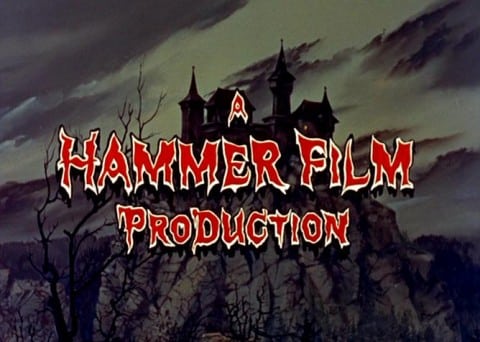

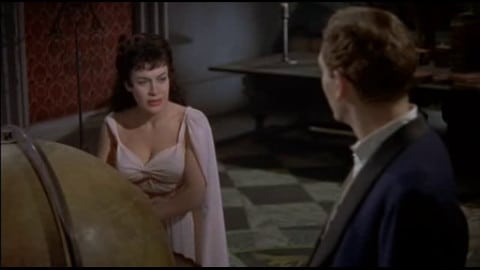
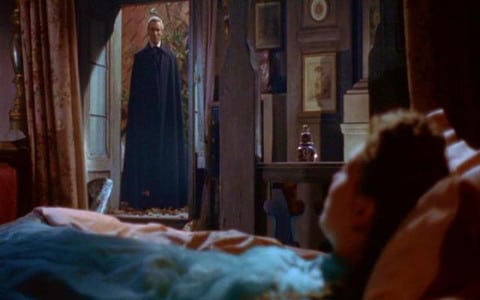
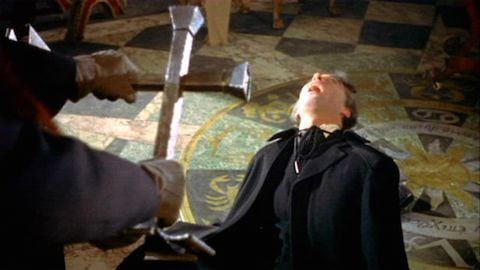

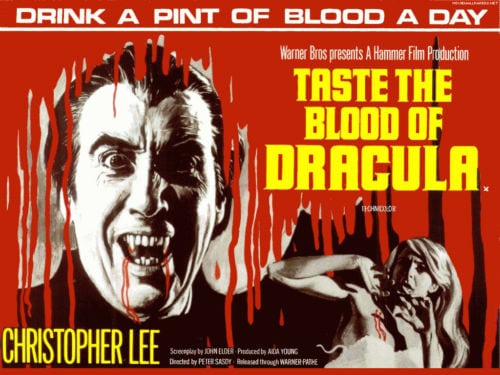
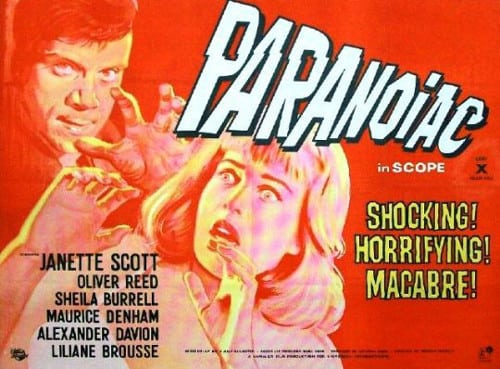
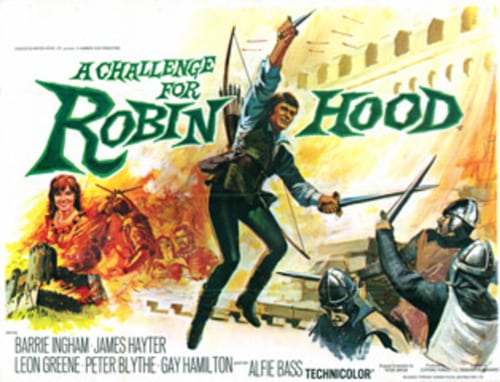
Be the first to comment